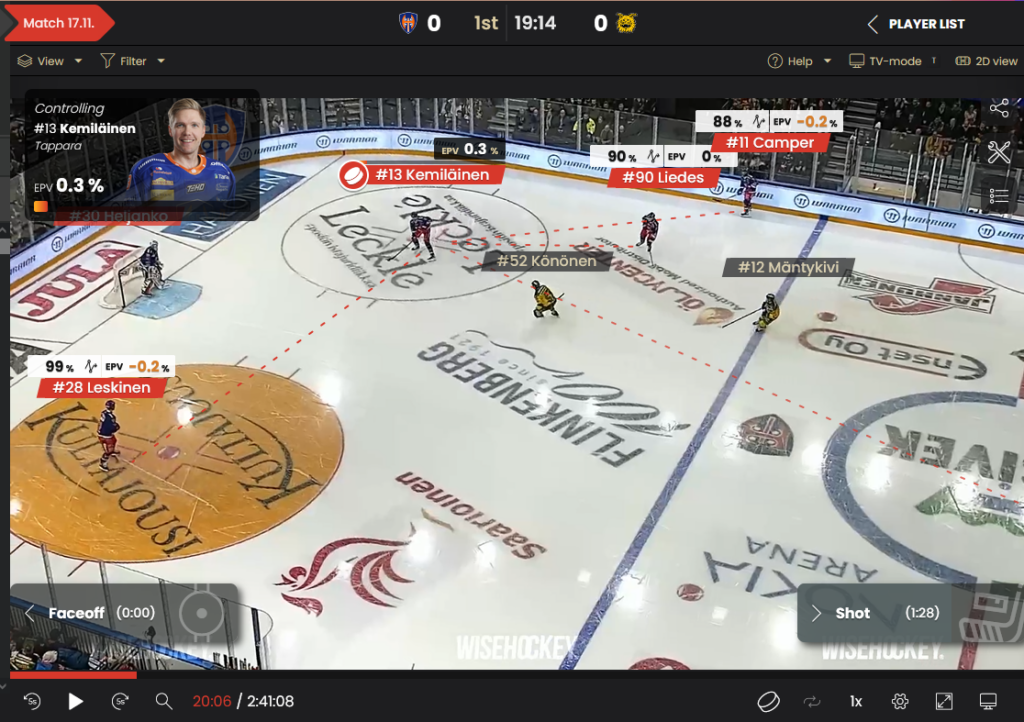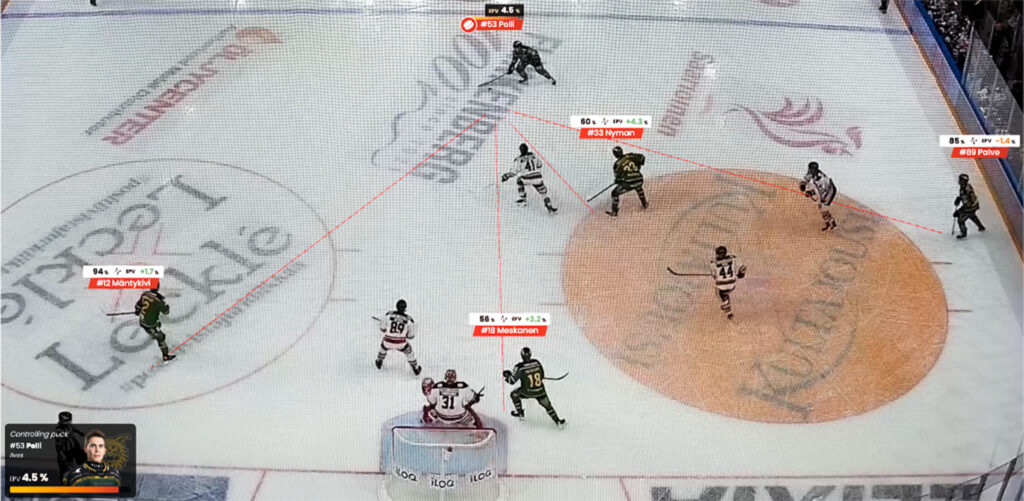Wisehockey, provider of fully automated real-time sports analytics, now calculates EPV – expected possession value – statistics for ice hockey automatically. For the first time, EPV is calculated in real time. In some sports like football, EPV statistics have already existed but are calculated post-game.
Since September, Wisehockey’s EPV has been used by professional hockey leagues including the Finnish league Liiga, the German league DEL, and the Norwegian league EliteHockey Ligaen. Wisehockey is also planning to introduce real-time EPV to other team sports like football, handball, and basketball with the Wisesport analytics platform.
Expected possession value is an advanced statistic that takes into account many aspects of the game. Essentially, EPV measures how likely it is that a team’s puck control leads to scoring within the following eight seconds.
”EPV measures how much value a player creates or loses through their actions while in possession of the puck. To quantify the actions’ effectiveness, we take into account the game context and the expected value of the decisions available to the player,” Wisehockey’s Data Scientist Frans Murto says.
With EPV, one can identify players who are consistently effective decision-makers and dig deeper into players’ skills and playing styles.
“High EPV indicates players who are consistently able to progress play, mitigate danger, or create high-value plays from low-value situations. You can also use EPV to profile and compare players according to their skill sets, and categorize how players generate or lose value in each phase of play. You can also observe how their decision-making changes depending on the on-ice situation,” Murto explains.

Advantage over other metrics
Possession value models have an advantage over other existing metrics.
“They are not dependent on a future outcome like shots or goals. This allows for a more accurate and granular assessment of a player’s on-puck ability, as each action is valued based on how much it impacts the current on-ice situation,” Frans Murto says.
The Wisehockey platform collects and processes real-time positioning data from over 3,000 games a year. The EPV model is based on this mass of high-quality data.
Wisehockey has plans to develop EPV-based statistics further to include off-puck events like puck battles and screens. In addition to EPV itself, values derived from it are also useful. They can be used to develop models that measure how players affect the game through their offensive and defensive off-puck positioning.
Moreover, Wisehockey is planning to adapt the EPV model to other team sports like football, handball, or basketball.

The demand for automated sports analytics is growing
The use of automated digital analytics platforms and tools in professional sports is growing. There is also a growing demand for automated video clipping in sports broadcasting. Many companies are looking for cost-efficient ways to produce new content for their viewers and attract new audiences.
In addition to advanced sports statistics such as the EPV, Wisehockey has put effort into enhanced game video analysis and tagging tools for this season. These features are especially important to video coaches who must traditionally watch dozens of videos to tag every shot, goal, face-off, and other important game event by hand. Automated analytics also enable tracking game events like potential scoring changes that would otherwise be difficult or even impossible to identify consistently.
Wisehockey’s fully automated real-time sports analytics platform is used by several professional leagues across Europe. The platform is used in many other tournaments a year as well, including the Spengler Cup in Switzerland again this year.
Additionally, the automated Wisesport football analytics platform is used in the Finnish national football training center Eerikkilä’s games from juniors to professionals on a daily basis.

More information
For more information, please contact us.


